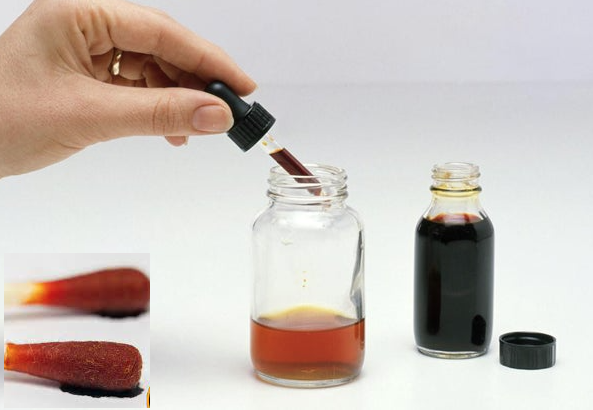Mertansine: Origin, Pharmacokinetics and Antitumor Activity
Mar 21,2024
General Description
Mertansine, discovered from Maytenus ovatus, is a potent ansa macrolide with significant antileukemic properties. Mertansine disrupts microtubule dynamics, crucial for cell division, thus inhibiting cancer cell proliferation. This discovery highlighted the importance of natural products in drug development, especially for cancer treatment. Mertansine, following intravenous administration, shows complex pharmacokinetics, being rapidly distributed to organs and primarily excreted through feces. Mertansine undergoes extensive metabolism and can influence the metabolism of other drugs by interacting with human liver enzymes. Its potent antitumor activity, due to microtubule disruption, has led to its use in antibody-drug conjugates for targeted cancer therapy, demonstrating the compound's valuable role in advancing cancer treatment strategies.

Figure 1. Mertansine
Origin
Mertansine is a potent antileukemic compound that belongs to the class of ansa macrolides. Its origin traces back to 1972 when it was first isolated from the plant Maytenus ovatus, a species known for its medicinal properties. The discovery of Mertansine marked a significant advancement in the field of cancer research due to its novel mechanism of action and potential therapeutic benefits. As an antileukemic agent, Mertansine operates by disrupting microtubule dynamics, which is crucial for cell division, thereby inhibiting the proliferation of cancer cells. This unique mode of action, derived from a natural source, underscored the importance of biodiversity in drug discovery, highlighting how compounds extracted from plants could lead to groundbreaking treatments. Mertansine's origin from Maytenus ovatus exemplifies the critical role of natural products in the development of new drugs, especially in the fight against cancer. 1
Pharmacokinetics
Mertansine demonstrates complex pharmacokinetics following intravenous administration. When rats were given a dose of 0.2 mg/kg of [3H]-mertansine, the compound was rapidly cleared from the bloodstream and extensively distributed across various highly perfused organs including the liver, kidney, spleen, lungs, heart, adrenal glands, and the gastrointestinal tract. This distribution was evidenced by high tissue-to-blood radioactivity ratios ranging approximately from 1 to 11 within the first 24 hours, which then decreased to minimal levels by 120 hours. Notably, the elimination of mertansine predominantly occurs through the feces, accounting for the majority of the dosed radioactivity recovery over 120 hours, with biliary excretion being the major elimination pathway (approximately 46% over 72 hours). Conversely, only a small fraction (about 5%) of the dosed radioactivity was recovered in the urine over the same period. Mertansine undergoes extensive metabolism, resulting in at least 11 metabolites through various pathways including S-oxidation, hydrolysis, S-methylation, and glutathione conjugation. Additionally, mertansine interacts with human liver enzymes, specifically inhibiting CYP2C8 and CYP2D6 with Ki values of 11 µM and 14 µM, respectively, and inactivating CYP3A4 with a Ki of 3.4 µM and a kinact of 0.058 min−1, indicating its potential to influence the metabolism of other drugs. However, it showed no induction potential at concentrations up to 1 µM, suggesting a limited impact on enzyme expression levels. 2
Antitumor activity
Mertansine exhibits potent antitumor activity, primarily through its mechanism of action as a microtubule-disrupting agent. This compound targets tubulin, a key protein in the microtubule structure within the cell, preventing the proper assembly of microtubules. Microtubules are essential for various cellular processes, including cell division (mitosis). By inhibiting microtubule polymerization, mertansine effectively halts the mitotic process, leading to cell cycle arrest and eventually inducing apoptosis (programmed cell death) in cancer cells. This specific targeting of rapidly dividing cells makes mertansine particularly effective against certain types of cancer. Its antitumor efficacy has been demonstrated in various preclinical models, showing significant potential in treating malignancies. However, due to its potent toxicity and challenges associated with targeting specific tumor cells while sparing normal tissues, mertansine is often conjugated to antibodies creating antibody-drug conjugates (ADCs). These ADCs are designed to deliver mertansine directly to cancer cells, thereby enhancing its antitumor activity while minimizing systemic toxicity, making it a valuable component in targeted cancer therapy. 3
Reference
1. Kupchan SM, Komoda Y, Court WA, et al. Maytansine, a novel antileukemic ansa macrolide from Maytenus ovatus. J Am Chem Soc. 1972;94(4):1354-1356.
2. Shen BQ, Bumbaca D, Yue Q, et al. Non-Clinical Disposition and Metabolism of DM1, a Component of Trastuzumab Emtansine (T-DM1), in Sprague Dawley Rats. Drug Metab Lett. 2015;9(2):119-131.
3. Ran W, Liu X, Chang L, et al. Self-assembling mertansine prodrug improves tolerability and efficacy of chemotherapy against metastatic triple-negative breast cancer. J Control Release. 2020;318:234-245.
- Related articles
- Related Qustion
- The current research on Mertansine Oct 9, 2023
Mertansine, a maytansine derivative, is always used to prepare antibody-drug conjugates.
- Synthesis and Bioactivity of Maytansine Oct 11, 2022
Maytansine DM1 is a cytotoxin that is used as the cytotoxic component of antibody-drug conjugates.
- Uses and effect of Mertansine Aug 29, 2022
Mertansine, also called DM1, is a thiol-containing maytansinoid that for therapeutic purposes is attached to a monoclonal antibody through reaction of the thiol group with a linker structure to create an antibody-drug conjugate.
Mogroside V targets miR-21-5p/SPRY1 to mitigate lung inflammation by modulating pro-inflammatory factors, offering a promising anti-inflammatory therapeutic approach.....
Mar 21,2024APIPovidone iodine (PI) is one of the oldest and most commonly used disinfectants in surgery.....
Mar 21,2024APIMertansine
139504-50-0You may like
- Mertansine
-

- $30.00/ BOX
- 2024-03-31
- CAS:139504-50-0
- Min. Order: 10BOX
- Purity: 99
- Supply Ability: 20TONS
- DM-1
-

- $10.00 / 1KG
- 2021-08-31
- CAS:139504-50-0
- Min. Order: 1Kg/Bag
- Purity: 99%min
- Supply Ability: 20000
- N2'-deacetyl-N2'-(3-Mercapto-1-oxopropyl)-Maytansine USP/EP/BP
-

- $1.10 / 1g
- 2021-08-19
- CAS:139504-50-0
- Min. Order: 1g
- Purity: 99.9%
- Supply Ability: 100 Tons min





